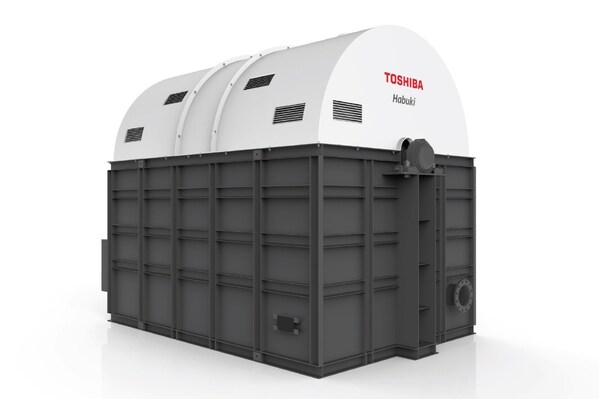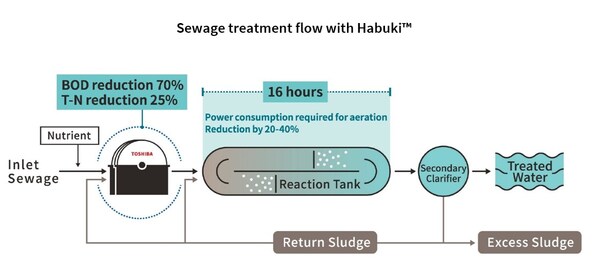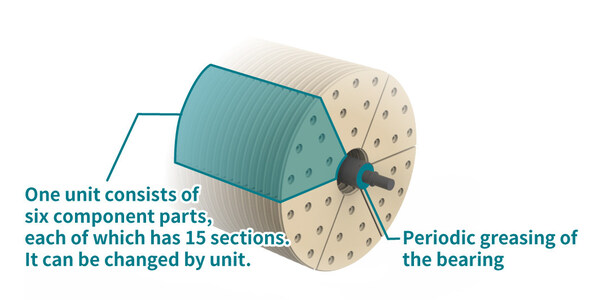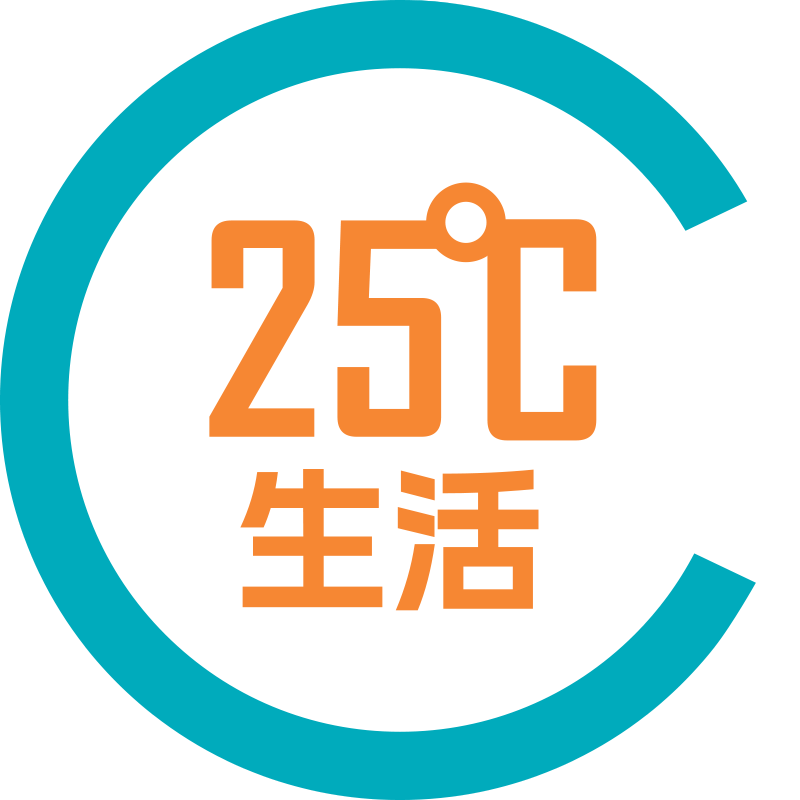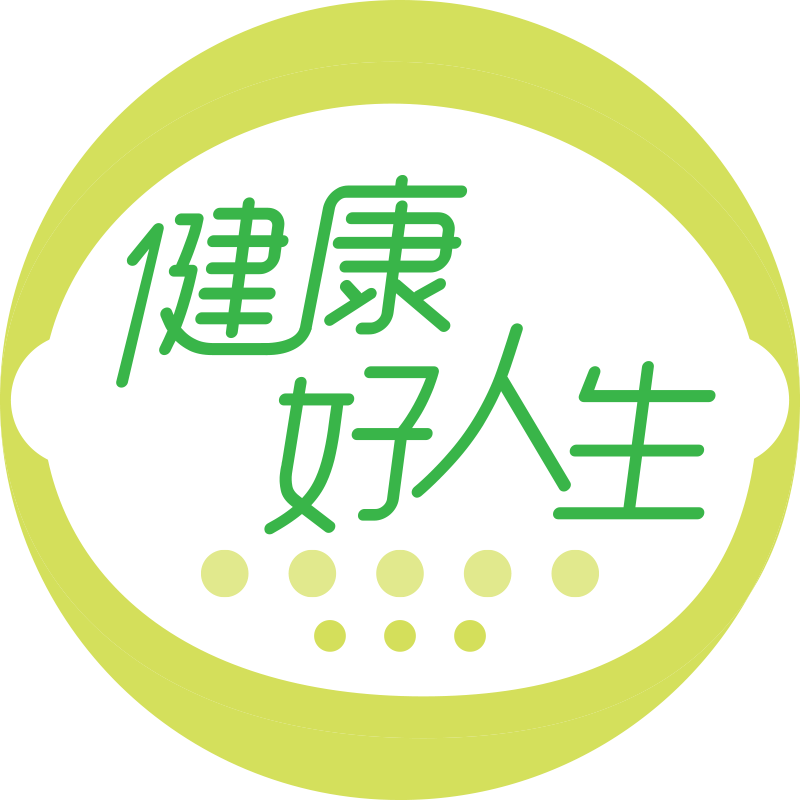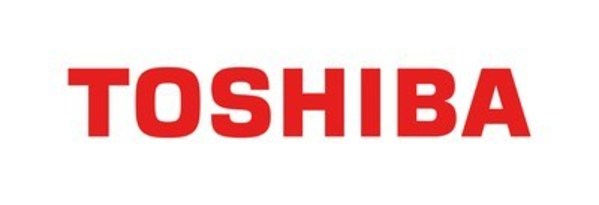 |
-Will contribute to capacity expansion, energy conservation, and measures to counteract aging equipment at sewage treatment facilities -
KAWASAKI, Japan, July 22, 2024 /PRNewswire/ -- Toshiba Infrastructure Systems & Solutions Corporation (Toshiba) today announced the launch of Habuki™, a pretreatment system with a novel rotating fiber unit for sewage treatment facilities that use the Oxidation Ditch (OD)*1. Installed as a pretreatment in OD facilities, it delivers low-power, efficient pretreatment that significantly reduces the pollution load on the reaction tanks that decompose and remove pollutants from sewage. Habuki™ is Japan's first*2 sewage treatment system to combine a pretreatment system using a rotating fiber unit and the OD. It has great commercial potential, as Japan has about 1,000 sewage treatment facilities that use the OD.
Habuki™ uses a rotating fiber unit to pretreat sewage. The rotating fiber unit is shaped to form a three-dimensional mesh that adheres to and holds a large number of microorganisms. Its constant rotation holds aerobic microorganisms on its surface, and promotes microorganism activity that enhances treatment capacity.
Data on the reduction rate of dissolved biochemical oxygen demand (BOD) and dissolved total nitrogen (T-N) in water discharged from Habuki™ confirms that it reduces pollutants by more than 70% in about 15 minutes*3. Since sludge is retained in the fiber unit, its retention time is longer and the proportion of protozoa is larger, realizing a 10-20% reduction in excess sludge against the conventional OD. As the fiber unit rotates and comes into contact with oxygen in the air, the need for aeration is eliminated, and the low-power, simple structure is easy to maintain and manage.
A number of trends are affecting sewage treatment facilities, including the need for optimization and expansion; energy conservation measures to promote carbon neutrality; and measures to address aging facilities. Any capacity increase usually requires the addition of a new line of reaction tanks. Habuki™ increases the capacity of existing reaction tanks, eliminating the need for new ones, winning reductions in construction costs. It also cuts energy use by reducing the pollution load flowing into reaction tanks, which can reduce power consumption per volume of treated water for aeration by approximately 20% to 40%. Even when repairing aging reaction tanks and aeration systems, Habuki™ can be temporarily installed to increase the treatment capacity of existing reaction tanks, allowing work to proceed without any loss of the facility's capacity.
In preparing to commercialize Habuki™, Toshiba carried out joint research and demonstration operations with the Japan Sewage Works Agency, and conducted tests at Ujiie Water Treatment Center in Sakura City, Tochigi Prefecture, from April 2022 to December 2023. The verification tests confirmed its performance in energy saving and capacity increases, and Toshiba has now released the product.
Toshiba will showcase Habuki™ at the SEWAGE WORKS EXHIBITION '24 TOKYO, Japan's largest sewerage exhibition, which will be held at Tokyo Big Sight from July 30 to August 2, 2024.
Going forward, Toshiba will continue to contribute to carbon neutrality and infrastructure resilience by leveraging water treatment technologies and experience cultivated over many years.
Note 1: A method in which activated sludge is treated using a non-terminal waterway as a reaction tank, and sludge and treated water are separated in the final sedimentation tank.
Note 2: First for sewage treatment facilities in Japan. Source: Toshiba's research.
Note 3: The apparent reduction rate of dissolved biochemical oxygen demand (BOD) and dissolved total nitrogen (T-N) of Habuki™ outlet water. BOD represents the amount of oxygen required to decompose organic matter in the water (mg/l). T-N represents the total amount of nitrogen compounds in the water (mg/l).
Main features of Habuki™
1. Reduce inflow load to the reaction tank in a short time
Habuki™ rotates at a rate of 3 to 8 times per minute and can reduce BOD and T-N in the sewage by 70% and 25%, respectively, in about 15 minutes of hydraulic residence time (HRT)*3. This reduces the load flowing into the reaction tank and reduces the electricity costs for aeration.
2. Reduce number of reaction tanks by high load operation with a large number of microorganisms
The rotating fiber unit traps suspended solids, and microorganisms simultaneously decompose soluble solids in the fiber unit, reducing the pollution load in a short period of time. When installed as a pretreatment facility, the system can treat twice the volume of influent sewage compared to the conventional OD, making it possible to reduce the number of reaction tanks and to adapt to changes in water volume and quality.
3. Simple structure for easy maintenance and management
Habuki™ is a very simple system in which 40% of the fiber body is immersed in water in the tank and rotates at low speed to perform water treatment. Maintenance is easy, requiring only periodic greasing of the bearing parts. The rotating fiber body has six component parts, shaped like wedges of cheese, each of which has 15 sections. Each part can be individually removed and replaced as necessary.
When reducing the number of reaction tanks, there is no need to maintain the aeration system.
Habuki™ specifications
Product name: Habuki™
Capacity: Up to 1,350m3/d/unit
External dimensions: 3,400mm x 2,400mm x 3,050mm (L x W x H)
Weight when empty: 5.3t
Rater power output: 1.5 kW (+1.5 kW blower)
Habuki™ official website:
https://www.global.toshiba/ww/products-solutions/social/water-environmental/solution-product/municipal-field/sewage-treatment/habuki.html
Habuki™ is the product name in Japan. It may be marketed under a different name when sold overseas.
source: Toshiba Infrastructure Systems & Solutions Corporation
《說說心理話》青少年自殺率上升,如何分辨求助訊號?社工分享陪伴的重要性► 即睇
